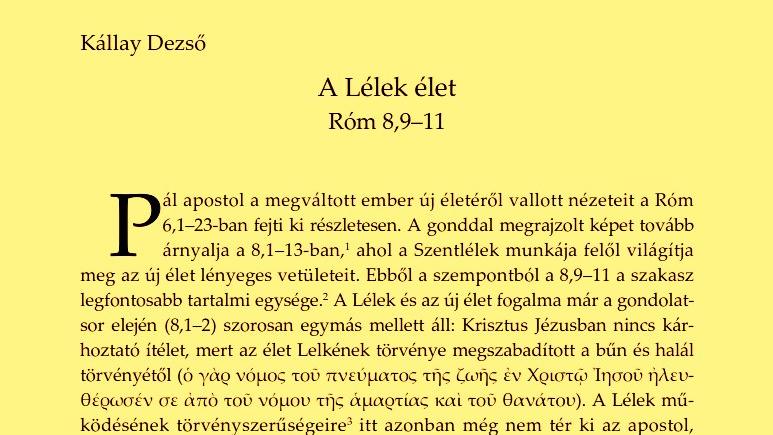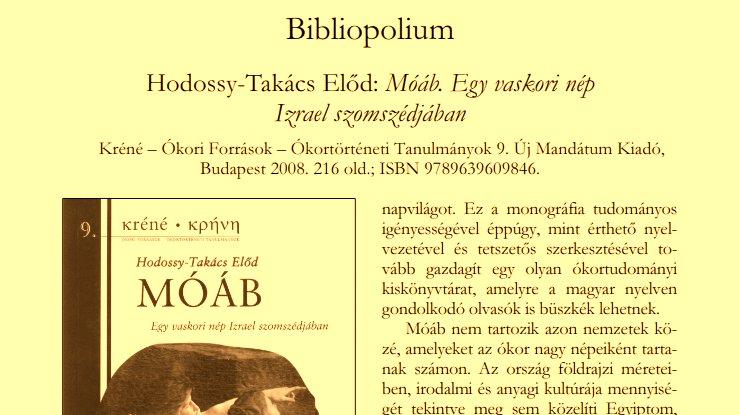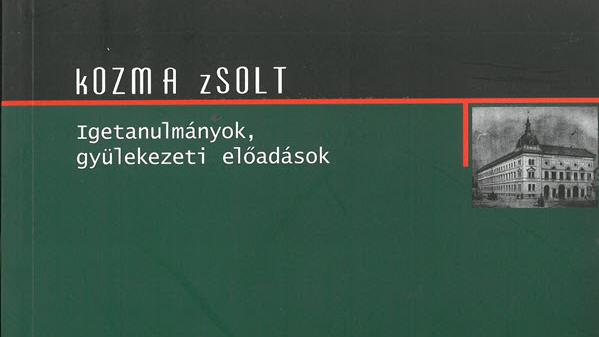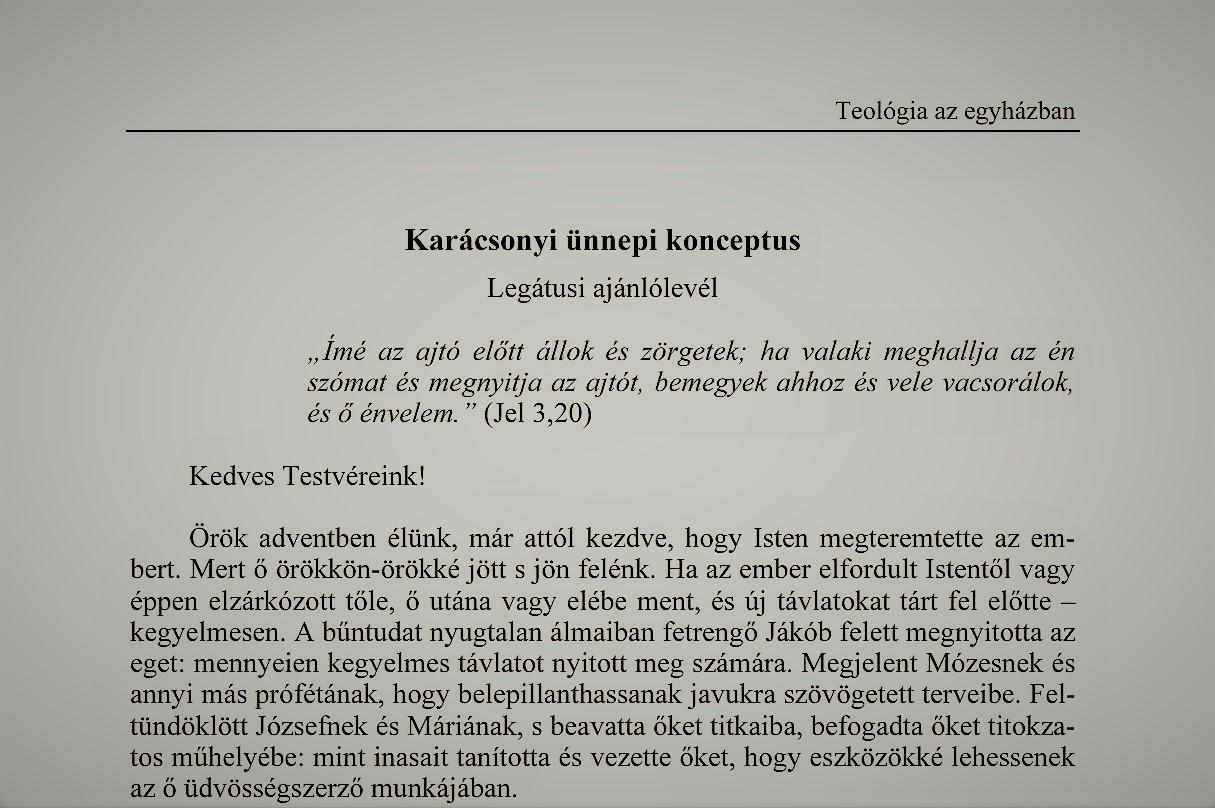Publications

Horváth Iringó › 2007 › Pages: 863--870Textiles from the 18th Century at the Reformatted Congregations of Déva and Hátszeg. The two chosen congregations can be found in towns of the historical HunyadZarand region. Among the characteristics of this Transylvanian area is that it lost a major Hungarian population during the last centuries. Reformatted congregations died out so many historical and cultural monuments and objects were also lost in time. The congregations of Deva and Hatszeg have a specific character. In the last century many objects were moved here, on purpose to save them, from the surrounding churches, where no…
Research article › Church history
Kovács Mária › 2007 › Pages: 834--862Goldschmiedearbeiten aus Reformierten Kirchengemeinden Deva und Hatszeg (16–18. Jahrhundert). Die Goldschmiedearbeiten die in dieser Artikel verarbeitet sind auch heute Eigentümer der gemeinden aus Reformierten Kirchenkreis Hunyad–Zaránd. Ich versuchte alle mögliche Informationen versammeln und so ein Überblick von die künstliche Richtungen der reformierte Patronen dieses Gebietes in 16–18 Jahrhunderten machen. Leider in vorigem Zeit hat man sehr wenig mit diese Theme beschaeftigt. Unsere Analyse will neben der fachmaessige Beschreibung auch ein Spiegel für die alltaegliche Leben,…
Research article › Church history
Orbán László › 2007 › Pages: 821--833Short History of the Lutheran Church District in Transylvania.The Hungarian Lutheran church in Transylvania has a unique history. At the beginning of it existence in the 16 century the Hungarian Lutherans joined the German Lutheran Church and have organized themselves as a deanery. They kept this structural form up till the end of the 19th century when they decided to split and have started to set up their own independent church district. As a first step they have formed a separate deanery which incorporated several Hungarian Lutheran local churches around Brassó, then mainly after the 20-…
Research article › Church history
Hankó-Nagy Alpár Csaba › 2007 › Pages: 800--820The First Two Months of Existence of the Southern Transylvanian Reformed Church District (September–October 1940) The study presents the first two months of the existence of the Southern Transylvanian Reformed Church District. This church district is not a historical part of the Hungarian Reformed Church, it was created after the Second Dictate of Vienna, which inorganically tore Transylvania in two. Northern Transylvania has become again part of Hungary, while Southern Transylvania remained under Romanian rule. Together with the country, the Reformed Church in Transylvania also tore in…
Research article › Church history › Dél-Erdély, dél-erdélyi református egyház, erdélyi református egyház, Második Világháború
Kis Juhász Vilmos › 2007 › Pages: 779--799Hymnology in the 16–17th Century Reformed Church of Transylvania. The religious experience, the belief in God and in God’s power has always influenced the society. The 16th century’s reformation defined and still defines Europe’s and the world’s social, religious, political and economical aspect. There were radical changes on the fields of theology, literature, liturgy, in religious songs, printing, school system, and syllabus within it. The new teaching of the reformers needed a new form of worship which preserved some of the old elements, formed, recreated them according to his needs.…
Research article › Church history
Kolumbán Vilmos József › 2007 › Pages: 760--778The History of the Endeman-story. Comparing the dispute which took place at the end of the eighteenth century with earlier cases of doctrinal discipline it becomes evident that whilst both Nádudvari and Huszti admitted to their guilt, and the accusers also proved all the accusations, in this dispute neither the defendants did confess their guilt, nor the accusers were able to prove their observations beyond any reasonable doubt as they did before in the two former trials. The fact that the two accused teachers, Bodola and Zilahi repeatedly refer to the unfounded and superficial character…
Research article › Church history
Dáné Veronka › 2007 › Pages: 746--759Bischof Mihály Tasnádi Ruber und seine Familie. Diese Studie stellt eine Ergänzung der biografischen Daten von Bischof Mihály Tasnádi Ruber (cca. 1560–1618) aufgrund von früher entdeckten und bisher unbekannten Quellen. Es ist allgemein bekannt, dass Tasnádi um 156o in Tasnád geboren wurde. Zwischen 1587 und 1591 studierte er in Wittenberg. Über seine erste Pfarrstelle haben wir keine sichere Kenntnisse. Die Fachliteratur erwähnt Gyalu und Bánffyhunyad, Gyalu kann jedoch ausgeschlossen werden. Die Kirchengeschichtsschreibung des 18. Jhs. behauptet, dass er am 7. März 1605 zum Bischof…
Research article › Church history
Buzogány Dezső › 2007 › Pages: 734--745Laymen Institution in the Hungarian Reformed Church District of Transylvania. It has been disputed for the last few decades the possible presence and task of the laymen in the church government of the 16–18. Centuries Hungarian Reformed Church life in Transylvania. Arguments have been brought up to prove that as soon as the 16th century the West-European type Presbyterium has already started to gain terrain in the church. The study tries to come up with arguments to prove that the democratic church government according to which the Swiss, English, German, Dutch reformed churches had been…
Research article › Church history
Sipos Gábor › 2007 › Pages: 727--733Der Heterodoxie-Prozess von András Huszti in 1742. Die reformierten Verkünder der universalen Gnade (gratia universalis) treten im Siebenbürgen erst in den dreißiger Jahren des 18. Jhs. auf. Sámuel Nádudvari, Pfarrer von Nagyenyed, der diese Lehre verkündedet, wurde von der Synode schnell verurteilt (1734). Der Pfarrer von Fogaras, József Makfalvi S., hat diese Lehre schon in der Zeit seiner niederländischen Studie (1723–1725) übernommen. Die Synode hat ihn in 1745 als Heterodoxer verurteilt. Danach verurteilte der Heterodoxie-Prozess von Déva auch den ersten Rechtprofessor des…
Research article › Church history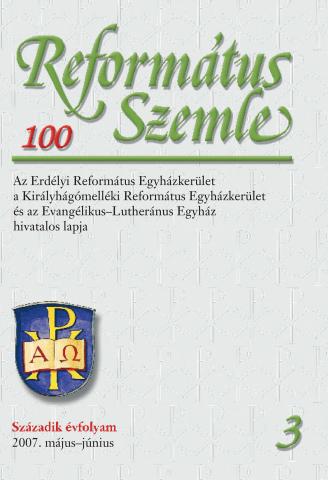
Varga László › 2007 › Pages: 668--677The Origin of Sin. The origin of sin is a universally commonly discussed problem of theology. It can be clarified only from the original texts of the Bible. There we find a clear answer by its diverse teachers: Sin originates from bodily desires. In our terminology, bodily desires are the biological instincts. In the animal world instincts are specifically restricted. They are only active in necessary times and conditions; they assurae the harmony of nature. Man’s instincts are free; they are always active and biologically unrestricted. The millionaire works for more money, women are able…
Research article › Systematic theology
Soós Amália › 2007 › Pages: 657--667On Sámuel Köteles’ Ethical Conception and the Criticism of Kantian Ethics. The present study is a short presentation of Sámuel Köteles’ ethics, in the mirror of Transylvanian and German Enlightenment. The study proves the existence of some basic similarities between the philosophical-ethical conceptions of Kant and Fichte and on the other hand the works of the above mentioned leader of 19.th century Transylvanian culture. I considered also important to achieve a critical overview of the entire kantian ethical construction using among others Max Scheler’s points of view, the one that proves…
Research article › Systematic theology
Pásztori-Kupán István › 2007 › Pages: 644--656The Hypostatic Union of Jesus Christ in the Light of Fifth-century Terminological Disputes. The present essay investigates the validity of the term hypostatic union at the outbreak of the Nestorian controversy with special focus upon Cyril of Alexandria’s Twelve Anathemas and on the reply given to them by Theodoret of Cyrus. In the light of the newly discovered evidence presented by Marcel Richard and Luise Abramowski one can conclude that the word u
Research article › Systematic theology
Papp György › 2007 › Pages: 636--643The Passion of Christ in the Early Christian Creeds. In this short paper I present a pending question of the Christological passage of the Apostolic Confession. According to the teaching of the Bible, the passion of the Lord could not be summarized in this sentence: “he suffered under Pontius Pilate”, because the Lord has not suffered only under Pontius Pilate, but in his whole life, as we read it in the Epistle of Paul to the Philippians: “but emptied himself, taking the form of a servant, being made in the likeness of men” (Phil 2,7). So, the passion of Christ begins with his “keno/sij…
Research article › Systematic theology
Papp György › 2007 › Pages: 626--635Theodoret of Cyrus: Haereticarum Fabularum Compendium – On Simon Magus. Here we publish a passage concerning Simon Magus from the Haereticarum Fabularum Compendium by Theodoret of Cyrus. The person of Simon Magus fades within the obscurity of legends. The published sources concerning him may be divided in three groups: the New Testament (Acts 8,5–25), the writings of the Church Fathers and the legends which arose concerning his person. All the Church Fathers present him as arch-heretic. In the introduction of this translation we will follow the way of Simon in the New Testament and in the…
Research article › Systematic theology
Püsök Sarolta › 2007 › Pages: 601--625The Life-work Which Reveals the Delusion of Christianity, the Kierkegaardian Criticism of the Church and Christianity. Entropy is a main characteristic of the human world; consequently the Church also has a similar tendency. Criticism is in symbiosis with Christian life. One of the most important critical analysis of Christianity is made by Kierkegaard. To understand his life-work from the point of view of criticism, we have to deal with three important aspects: a) The religious influence in his childhood. His family comes from the Moravian tradition; he had the opportunity to examine…
Research article › Systematic theology
